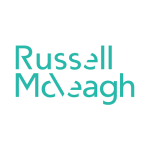Legislation is to be introduced to reform New Zealand's loss carry-forward rules to include a business continuity test. Existing New Zealand law allows a company to carry-forward its tax losses to offset against profits in future years only if its shareholding remains the same, at least to the extent of 49%.
This test creates an impediment for businesses, particularly start-ups, wanting to innovate and grow by obtaining capital because the 49% ownership continuity threshold may be breached.
The proposal of the business continuity test comes partly in response to the economic impacts of COVID-19, with the aim to allow businesses that may require recapitalisation due to the effects of COVID-19 to take advantage of the revised test. Broadly, this test would allow a company to carry-forward losses, even after a change of ownership breaching the existing ownership continuity requirements, as long as the underlying business continues.
While legislation is yet to be introduced, the New Zealand Inland Revenue has released a questions and answers document and a fact sheet explaining the purpose and design of the proposed test.
Features of the proposed business continuity test
The proposed business continuity test can be seen as a hybrid of the Australian ‘same or similar business’ test and the UK test. Similar to the UK test, the proposed test would have a primary negative test – losses would be permitted to be carried forward after a change in ownership as long as there is not a major change as described in the legislation. Whether a change to a company's business activities is major is proposed to be determined by having regard to the assets used and other relevant factors.
Certain carve-outs to the definition of ‘major change’ are proposed to allow for the fact that companies may undertake major change to innovate and grow, including:
Changes to increase efficiency, scale, or to keep up with developing technology; and
Rationalising the company’s product or service range by introducing new items produced using largely the same assets of the company or of a kind relating to those already being produced or previously produced. When considering if the same assets of the company are being used, land (but not fixtures) is to be excluded from this carve-out as an integrity measure.
The proposed test includes several anti-avoidance measures, aimed to stop the ability of firms to trade in tax losses, which include:
A pre-purchase dormant company rule that would disallow the carry-forward of losses of dormant companies;
An anti-injection rule for transactions with associated persons similar to Australia's general income anti-injection rule;
An anti-cost transfer rule to stop the artificial increasing of a loss company's income in a group situation; and
An anti-avoidance rule preventing a change in business prior to a change in ownership for the purpose of meeting the business continuity test after the ownership change.
Application of the proposed test
The proposed business continuity test would apply to losses arising from the 2013 to 2014 income year onwards. Most companies would be required to maintain business continuity until the end of the income year which is five years after the change in ownership (or if earlier, the end of the income year in which the losses are utilised), with an exception for companies which are permitted to take bad debt deductions.
Legislation for the proposed test is expected to be introduced in mid-March 2021 in a supplementary order paper to the Taxation (Annual Rates for 2020–21, Feasibility Expenditure, and Remedial Matters) Bill before the House of Representatives.
Fred Ward
Partner, Russell McVeagh
E: fred.ward@russellmcveagh.com
Young-chan Jung
Solicitor, Russell McVeagh
E: young-chan.jung@russellmcveagh.com













